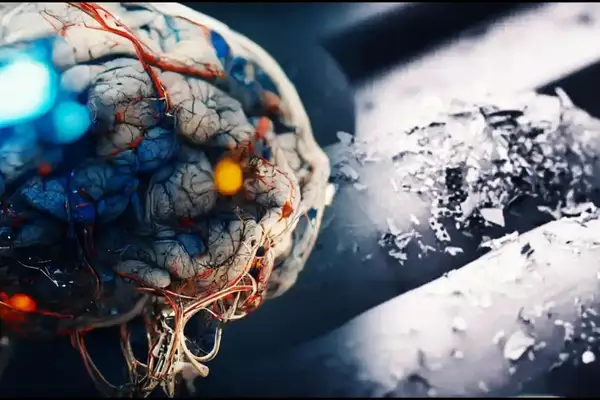Microplastics in human brain tissue have been revealed by recent studies, which show that these particles are accumulating in critical human organs, including the brain.
Recent Findings
- Recent studies have detected microplastics in human lungs, placentas, reproductive organs, livers, kidneys, blood vessels, and notably, the brain.
- In a study of brain samples from early 2024, it was found that brain tissue contained, on average, about 0.5% plastic by weight.
- Brain samples from individuals who had died with dementia showed up to 10 times more plastic than healthy samples.
About Microplastics
- Definition: Microplastics are plastic particles smaller than 5 mm in diameter.
Types:
- Primary Microplastics: Manufactured intentionally for use in products like cosmetics, detergents, and paints.
- Secondary Microplastics: Result from the breakdown of larger plastic items such as bottles and bags.
Potential Health Hazards:
- Oxidative Stress: May lead to cell damage and inflammation.
- Cardiovascular Disease: Increased risk due to the presence of microplastics.
- Reproductive & Endocrine Issues: Animal studies link microplastics to fertility problems and endocrine disruption.
- Cognitive Effects: Microplastics may impair learning and memory, potentially linking to neurological disorders.
Environmental and Ecological Impact:
- On Aquatic Ecosystems:
- Bioaccumulation in marine life, affecting immune and digestive systems.
- Disruption of nutrient cycles and trophic energy transfer in oceanic bottom-up processes.
- On Benthic Organisms: Impacts critical oceanic processes, such as nutrient remineralization.
Ref: Source
| UPSC IAS Preparation Resources | |
| Current Affairs Analysis | Topperspedia |
| GS Shots | Simply Explained |
| Daily Flash Cards | Daily Quiz |
Frequently Asked Question:
What are microplastics and where have they been found in human organs?
Microplastics are plastic particles smaller than 5 mm in diameter. They have been found in human lungs, placentas, reproductive organs, livers, kidneys, blood vessels, and notably, the brain.
How much plastic by weight was found in brain tissue on average?
In a study from early 2024, it was found that brain tissue contained, on average, about 0.5% plastic by weight.
What did brain samples from individuals with dementia show in terms of microplastics?
Brain samples from individuals who had died with dementia showed up to 10 times more plastic than healthy samples.
What are the two types of microplastics and how are they formed?
The two types of microplastics are primary and secondary. Primary microplastics are manufactured intentionally for use in products, while secondary microplastics result from the breakdown of larger plastic items.
What potential health hazard do microplastics pose to human health?
Microplastics may lead to oxidative stress, which can cause cell damage and inflammation in the body.




